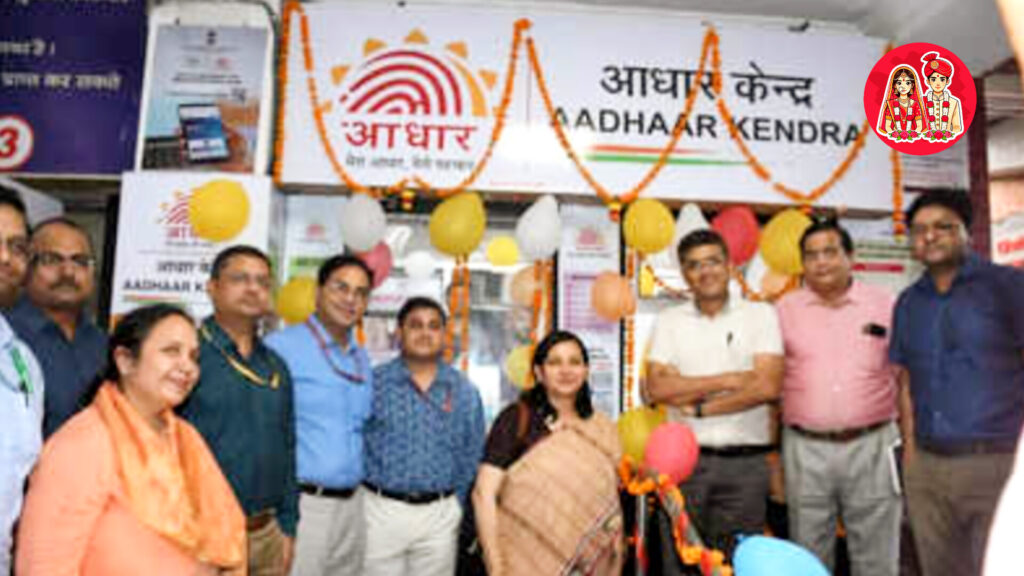
Key Points
- Starting an Aadhaar centre involves becoming an authorized enrolment agency (EA) by meeting UIDAI requirements.
- You need to clear an online certification exam and register with a Registrar or CSC for a government-recognized centre.
- Research suggests investing in equipment like laptops, scanners, and a dedicated space is necessary.
- The evidence leans toward earning Rs 35 per successfully generated Aadhaar card, but income may vary.
Overview
Starting an Aadhaar centre can be a rewarding venture, but it requires careful planning and adherence to guidelines set by the Unique Identification Authority of India (UIDAI). Below, we outline the key steps to help you get started, keeping the process simple and approachable for beginners.
Steps to Begin
- Understand the Role: An Aadhaar centre helps residents enroll for Aadhaar cards and update details, operating as an enrolment agency (EA) under UIDAI.
- Meet Eligibility: You must be at least a Class 12 pass and clear an online certification exam conducted by UIDAI through NSEIT Ltd.
- Choose Your Path: Decide between a government-recognized centre via CSC (Common Service Center) or a private franchise, each with its own registration process.
- Set Up Infrastructure: Invest in necessary equipment like laptops, fingerprint and iris scanners, and secure a dedicated space.
- Register and Operate: Register with a Registrar, enroll operators, and follow UIDAI guidelines to start services, earning Rs 35 per Aadhaar card generated.
Important Considerations
- Ensure all equipment meets UIDAI specifications and is certified for use.
- Compliance with UIDAI’s data protection and operational guidelines is crucial for smooth operations.
- For detailed guidance, visit the official UIDAI website (UIDAI Enrolment Agencies) and CSC portal (CSC Registration).
Comprehensive Guide on Starting an Aadhaar Centre

This detailed guide expands on the initial steps, providing a thorough understanding of the process, requirements, and operational aspects of starting an Aadhaar centre. It is designed to mimic a professional survey note, ensuring all relevant information is covered for a complete overview.
Introduction
The Aadhaar programme, managed by the Unique Identification Authority of India (UIDAI), is a cornerstone of identity verification in India, providing a 12-digit unique identification number to residents. Starting an Aadhaar centre involves becoming an enrolment agency (EA), which facilitates Aadhaar enrollment, updates, and corrections. This guide outlines the process, drawing from multiple reliable sources to ensure accuracy and comprehensiveness.
Eligibility and Certification
To begin, you must meet certain eligibility criteria:
- A minimum educational qualification of Class 12 is required.
- You need to clear an online certification exam for UIDAI certification as an operator or supervisor, conducted by NSEIT Ltd, appointed by UIDAI as the Testing and Certification Agency (TCA). This step is crucial for authorization to handle Aadhaar enrollment and biometric verification.
The certification process ensures that operators are equipped to manage the technical and procedural aspects of Aadhaar services, maintaining the integrity of the system.
Choosing the Operational Model
You have two primary paths to start an Aadhaar centre:
- Government-Recognized Centre via CSC: Register as a Village Level Entrepreneur (VLE) with the CSC (Common Service Center). Visit the official CSC website (CSC Registration), click on “Interested to become a CSC,” then proceed with registration by entering your Aadhaar number, choosing authentication, and verifying via OTP. This model is ideal for those seeking government recognition and support.
- Private Franchise: Partner with a private company empaneled with UIDAI. This option may offer flexibility but requires ensuring the company is authorized and compliant with UIDAI guidelines.
Both models require you to clear the UIDAI certification exam, ensuring consistency in operational standards.
Setting Up the Centre
Once certified, you need to set up the physical and technical infrastructure:
- Equipment Requirements: Invest in a laptop, webcam, lamp, fingerprint scanner, iris scanner, printer, and a stable Internet connection. All equipment must meet UIDAI specifications and be certified to ensure compatibility with UIDAI software.
- Space: Secure a dedicated space, either owned or rented, to operate the centre. The space should be accessible and conducive to handling client interactions and data processing.
The investment in technology and space is a critical step, with costs varying based on location and scale. For instance, equipment costs may include laptops (around Rs 30,000–50,000), biometric scanners (Rs 20,000–40,000 each), and additional peripherals like printers and lamps.
Registration as an Enrolment Agency
To operate legally, you must become an enrolment agency (EA):
- Get hired by a Registrar, which could be a government entity or a private organization authorized by UIDAI, under a contract.
- Undergo verification of your organization’s profile, technical capabilities, and financial stability to ensure readiness.
- Obtain an EA code and Registrar code from UIDAI, which are essential for station registration.
- Install the latest Aadhaar software provided by UIDAI, configure client laptops, complete user setup, and test pre-enrollment data to ensure operational readiness.
This process involves sending data packets and user management sheets to the Central Identities Data Repository (CIDR) for validation, ensuring all operators are registered and activated.
Operational Responsibilities
As an EA, you have several responsibilities to ensure compliance and efficiency:
- Use only UIDAI-approved software for all enrollment activities, which includes capturing audit data for traceability.
- Collect physical or electronic supporting documents from applicants and convert them to electronic format as per UIDAI processes. This ensures all data is securely stored and accessible for verification.
- Conduct field-level enrollment activities, including assisting with updates and corrections, and perform audits as required by UIDAI.
- Allow UIDAI access to your premises and records for inspections to maintain transparency and compliance.
- Abide by UIDAI’s Code of Conduct, which includes data protection policies and operational guidelines, to safeguard resident information.
Enrollment of Operators and Supervisors
The process begins with enrolling the first operator, who must be enrolled by an authorized EA operator:
- Send the first operator’s data packet and user management sheet to CIDR for processing.
- Once the first operator receives their UID, they can enroll other operators and supervisors, ensuring all are registered and activated with UIDAI.
- All operators and supervisors must undergo the certification process, maintaining a skilled workforce for enrollment activities.
This hierarchical enrollment ensures a chain of accountability and compliance with UIDAI standards.
Financial Aspects
Starting an Aadhaar centre involves initial investment and potential earnings:
- Investment: You will need to invest in technology (laptop, scanners, etc.) and secure a suitable space, with costs varying based on location and scale. For example, equipment costs may range from Rs 50,000 to Rs 1,50,000, depending on the quality and quantity.
- Earnings: You can earn Rs 35 per successfully generated Aadhaar card, as per UIDAI’s payment structure for EAs. Income may vary based on the volume of applications processed, with higher footfall in urban areas potentially leading to higher earnings.
This financial model makes it important to assess the local demand and competition before setting up.
Application Through Alternative Platforms
In addition to the official UIDAI and CSC routes, you can apply through platforms like Digital Gramin Seva (Digital Gramin Seva Aadhaar Center Apply):
- Login to the portal and click on the Aadhar Kendra option to apply.
- Eligibility includes having a UIDAI Aadhar operator/supervisor Sify certificate, the latest soft copy of e-Aadhar, and Internet connectivity.
- The platform facilitates enrollment of new applicants and assistance with updates, with first-time tasks being free and nominal fees for some services as set by UIDAI.
This option provides an alternative for those seeking streamlined application processes, especially in rural areas.
Document Requirements for Operations

To handle enrollments effectively, you need to be familiar with the documents required:
- For New Aadhaar (Identity Proof): Acceptable documents include Passport, PAN card, Ration/PDS Photo card, Voter ID, Driving license, Government-issued photo ID, PSU service photo ID, MG-NREGS job card, Educational Institution ID, Arms license, Photo Bank ATM card, Photo Credit card, Pensioner photo card, Freedom Fighter photo card, Kisan photo passbook, CGHS photo card, Marriage certificate, Name change certificate, ECHS Photocard, Residence address card by Dept. of Posts, Identity Certificate by Gazetted Officer/Tehsildar, Disability/Handicapped certificate by State/UT Government.
- For Children: Same as adults, plus one parent’s Aadhaar copy. Biometrics are not required for children below 5 years but will be required when they turn 5. Additional documents include Proof of residence, Proof of identity, and Birth certificate.
- Accepted Identity and Address Proofs: Include Passport Copy, PAN Card Copy, Voter ID Copy, Driving License, and various utility bills like Electricity Bill (last 3 months), Water bill, Gas Connection Bill, etc.
This comprehensive list ensures you can assist a wide range of applicants, from adults to children, with their documentation needs.
Compliance and Maintenance
Maintaining compliance is crucial for long-term success:
- Regularly update your knowledge of UIDAI’s processes and policies to stay aligned with any changes.
- Ensure your centre is equipped with the latest UIDAI-approved software and hardware to avoid operational disruptions.
- Handle all documents and data securely, adhering to UIDAI’s data protection guidelines to protect resident information and maintain trust.
Conclusion
Starting an Aadhaar centre is a structured process that requires meeting UIDAI’s eligibility criteria, investing in infrastructure, and ensuring compliance with operational guidelines. Whether you choose the CSC route for government recognition or a private franchise, the key is to follow the certification and registration processes diligently. With an initial investment in equipment and space, and potential earnings of Rs 35 per Aadhaar card, this venture can be financially viable, especially in areas with high demand. Always refer to official sources like the UIDAI website (UIDAI Enrolment Agencies) and CSC portal (CSC Registration) for the latest updates and detailed guidance.







